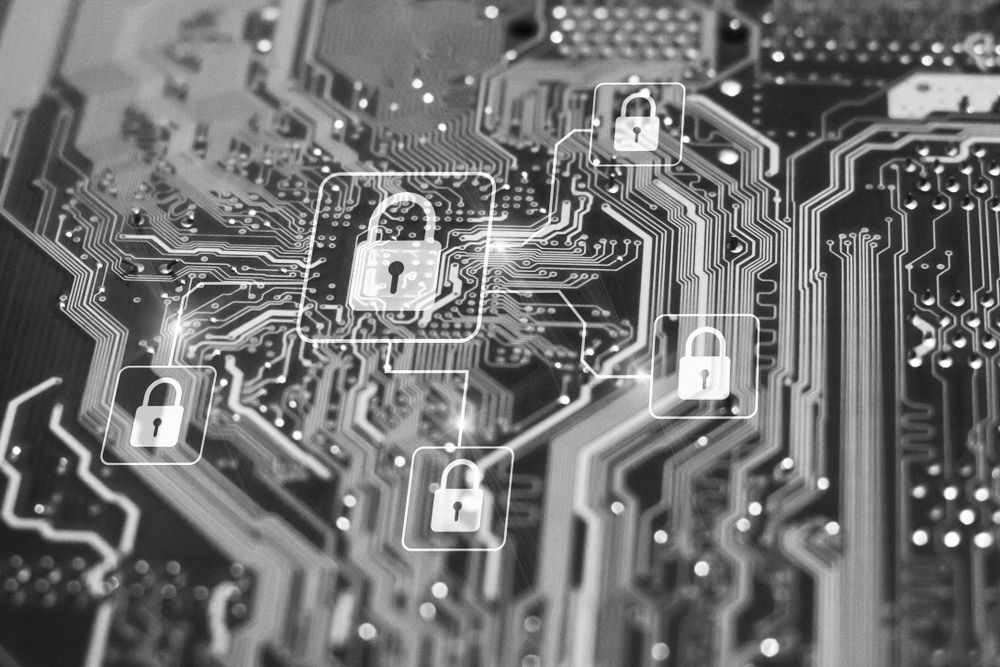What are the Different Types of Cyber Security?
Share this article:
Written by: ConsultNet

Cyber security is a way to protect the technologies, systems, and people in your organization from the threats of cyberattacks. As criminals become more sophisticated and the threats become more severe, cyber security is a critical element of every company’s technology.
Why is Cyber Security Important?
Cyber security is a series of defenses designed for your unique IT structure. Once installed, cyber security plans are intended to detect, neutralize, and eradicate attacks. In addition, the cyber security solution you use monitors networks for suspicious activity, ensuring that your data and infrastructure are safe.
Without a cyber security plan, your company is vulnerable to attack. Those attacks can devastate, and in some cases, bankrupt a business. The damage is both reputational and financial.
Types of Cyber Security Explained
Cyber security is a complex, interwoven set of technologies, each designed to protect a specific element of your IT. Here’s a closer look at the types of cyber security and what they do.
Network Security
Network security is the foundational element of cyber security, ensuring that corporate networks are secured. It uses devices, processes, and technology to prevent threats, close security gaps, reduce downtime, and ensure compliance with regulatory mandates.
Network security starts with the physical protection of network devices. It also includes software, such as firewalls and encryption tools, that protect data that’s in the network and prevent unauthorized parties from accessing it.
Administrative network security comprises the protocols an organization uses, such as guidelines for the use of technology used remotely, password and authentication policies, and access levels.
Regular audits are a key component of network security, ensuring that there are no new vulnerabilities and that deployed solutions are working properly.
Application Security
Your organization uses countless software programs – applications – to manage your work. These apps range from basic word processing and spreadsheets to communications tools to customized, industry-specific solutions. All those applications need to be protected to ensure that you are protected.
Application security ensures that mobile and web-based applications are secured. App security starts with the developers, who should build software that is protected when you start to use it.
It also involves regular testing of those applications to ensure there are no security flaws. If you’re developing your own applications for use by customers or employees, it’s essential that application security approaches are used.
These practices should include a review of code, vulnerability scanning, secure authentication and authorization protocols, and regular testing and updating.
Information Security
Information security, often called InfoSec, is a set of guidelines and procedures to prevent unauthorized access to data. It also ensures that data are not misused, destroyed, deleted, or misused. These practices protect data in two states – when stored and when in transit.

InfoSec applies to all data types, including those stored in databases, files, or other places. The processes, such as passwords, biometric verification, or multifactor authentication, are meant to control and verify access.
In addition, InfoSec includes encryption that protects data while in transit or at rest. It also includes regular data backups and the creation of business continuity and disaster recovery plans.
Cloud Security
Increasingly today, organizations are storing data, apps, and operating systems in the cloud. Keeping that data is critical, especially given that most organizations use a third party to manage and run their cloud solutions.
Cloud security involves technical and administrative controls. Much of your cloud security plan, or that of your provider, will include elements of other cyber security elements.
Whether you manage or outsource your cloud deployments, it’s important to know how that data is secured. That means having virtual private networks for access, secure cloud configuration protocols, identity, and access management, security audits, and compliance checks.
Identity & Access Management
Identity and access management (IAM) is a practice that verifies users and controls access to resources. For the latter, the practice of need-to-know or need-to-use access is best, setting role-based parameters and limiting access only to those who need the data for their work.
Again, this is where strong authentication tools, such as passwords, biometrics, and multifactor authentication are deployed.
Endpoint Security
Your employees are accessing information on all types of devices, including desktop computers, laptops, tablets, and smartphones. All those devices need to be protected from cyberattacks.
Endpoint devices are often vulnerable entry points to corporate networks. Cyber attacks often target these devices to gain access to data.
Endpoint security includes using email filters to ensure that malware and spam are blocked from inboxes. Endpoint protection tools can also monitor files sent to the network to detect viruses and attacks.
Disaster Recovery
There are myriad disasters that could affect your business – natural disasters (including floods, fires, and earthquakes), unanticipated manmade impacts (such as a loss of power), and cyberattacks.
No matter what the cause is, these disasters can wreak havoc, cost millions, and result in losses of customers, revenue, and reputation.
Disaster recovery planning results in protocols, policies, and actions taken after disaster strikes. The aim is to minimize data loss and ensure organizations can recover or continue operations by restoring key IT infrastructure, systems, and software.
Disaster recovery involves scheduled data backups, snapshots of data and files, and sites where organizations can operate. The aim is to minimize downtime and data loss, getting businesses operational fast.
How to Build a Comprehensive Cyber Security Plan
Most businesses opt to work with an expert to develop a cyber security plan. The key steps include:

- Assessing security risks and identifying vulnerabilities
- Establishing security goals
- Evaluating existing technology
- Creating a security framework and designing a plan
- Reviewing security policies and updating or creating as necessary
- Deploying the cyber security plan
- Evaluating and improving the plan regularly
A trusted partner can help create your cyber security strategy, complete the assessments, draft policies, build and deploy the technologies, and provide the ongoing monitoring and maintenance necessary.
Looking for Cyber Security Solutions?
ConsultNet is a leader in cyber security. We have worked with businesses of all sizes and across industries to develop and deploy rigorous defenses that keep technology and users safe.
We take a layered approach to cyber security, with cascading levels of protection that ensure that the bad guys stay out. To learn more about how ConsultNet can help with your cyber security needs, contact us today.












